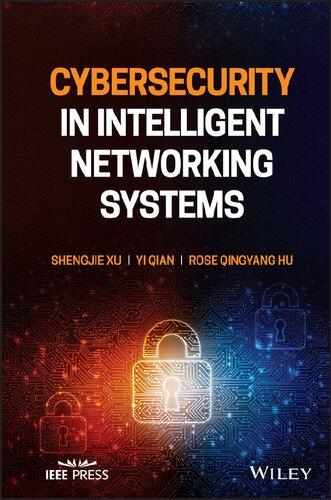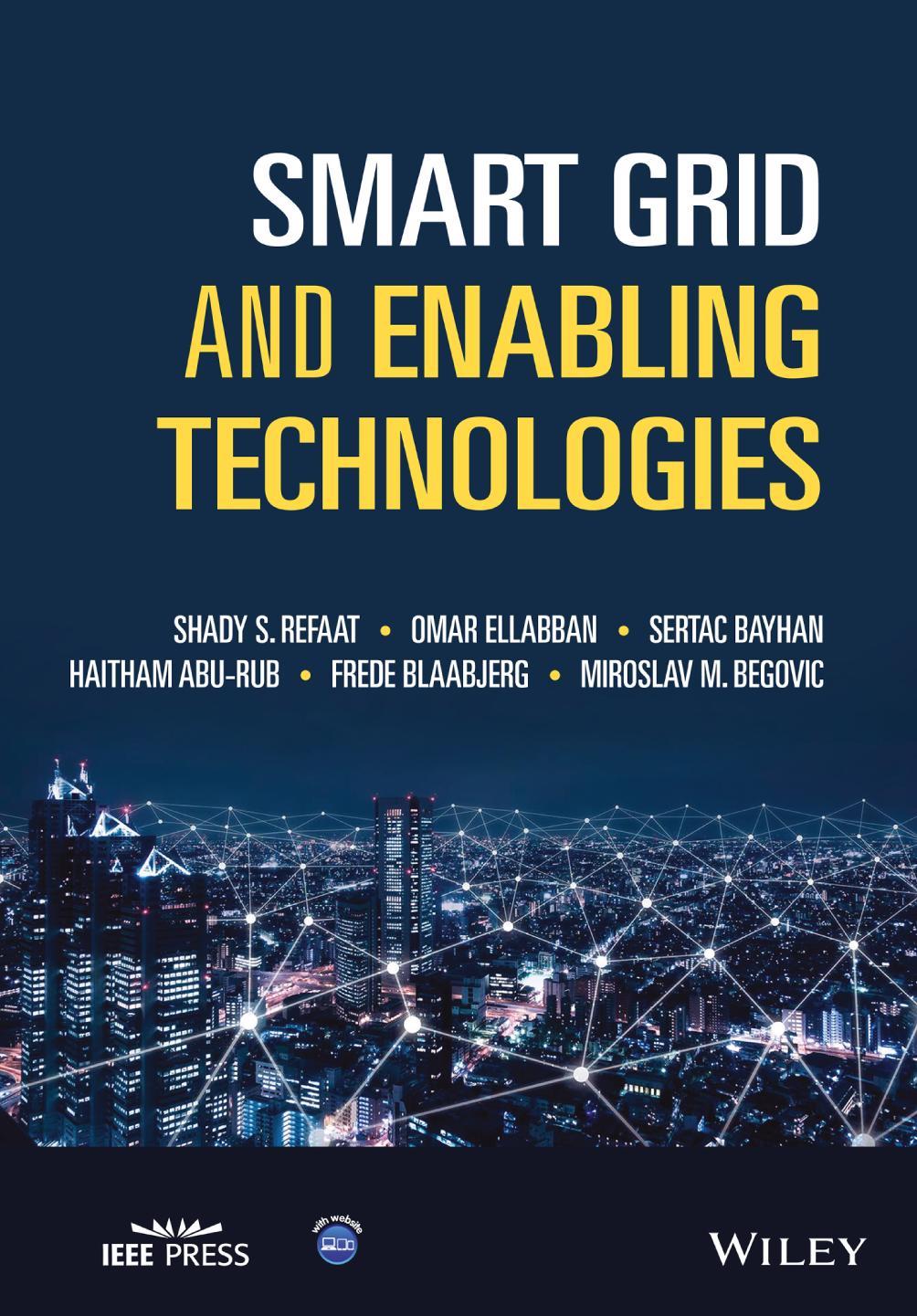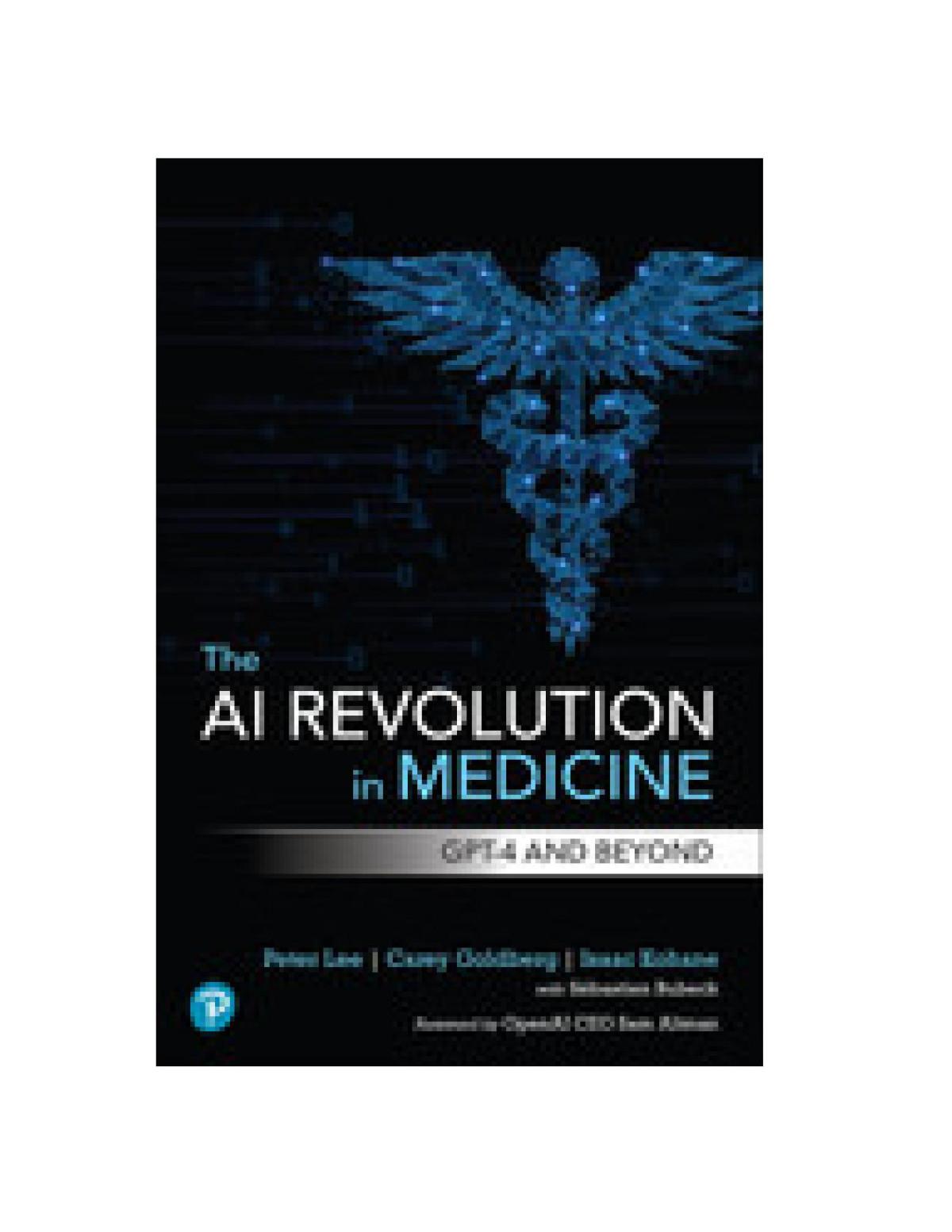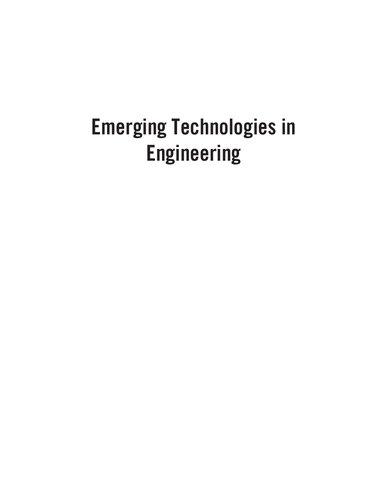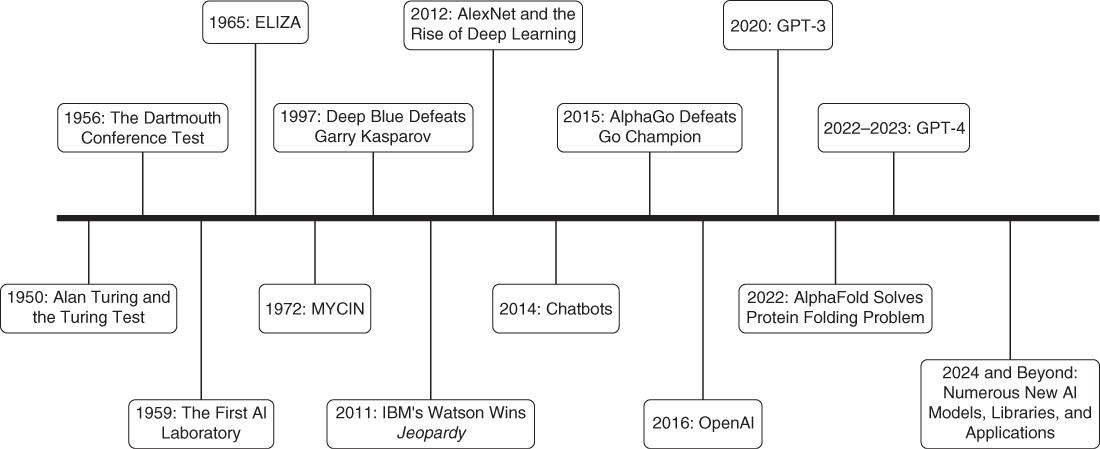The
AI Revolution in Networking, Cybersecurity, and Emerging Technologies
Omar Santos, Samer Salam, Hazim Dahir
Cover: Javier Pardina/Shutterstock
Figure 5-4: GreenOak/Shutterstock
Figure 5-5: U.S. Bureau Transportation Statistics
Figure 5-6: malinikart/Alamy Images
Many of the designations used by manufacturers and sellers to distinguish their products are claimed as trademarks. Where those designations appear in this book, and the publisher was aware of a trademark claim, the designations have been printed with initial capital letters or in all capitals.
The authors and publisher have taken care in the preparation of this book, but make no expressed or implied warranty of any kind and assume no responsibility for errors or omissions. No liability is assumed for incidental or consequential damages in connection with or arising out of the use of the information or programs contained herein.
For information about buying this title in bulk quantities, or for special sales opportunities (which may include electronic versions; custom cover designs; and content particular to your business, training goals, marketing focus, or branding interests), please contact our corporate sales department at corpsales@pearsoned.com or (800) 382-3419.
For government sales inquiries, please contact governmentsales@pearsoned.com.
For questions about sales outside the U.S., please contact intlcs@pearson.com.
Visit us on the Web: informit.com/aw
Library of Congress Control Number: 2024930069
Copyright © 2024 Pearson Education, Inc.
Hoboken, NJ
Please contact us with concerns about any potential bias at https://www.pearson.com/report-bias.html.
All rights reserved. This publication is protected by copyright, and permission must be obtained from the publisher prior to any prohibited reproduction, storage in a retrieval system, or transmission in any form or by any means, electronic, mechanical, photocopying, recording, or likewise. For information regarding permissions, request forms and the appropriate contacts within the Pearson Education Global Rights & Permissions Department, please visit www.pearsoned.com/permissions/.
ISBN-13: 978-0-13-829369-7
ISBN-10: 0-13-829369-4
$PrintCode
Editor-in-Chief
Mark Taub
Director ITP Product Management
Brett Bartow
Executive Editor
James Manly
Managing Editor
Sandra Schroeder
Development Editor
Christopher A. Cleveland
Production Editor
Mary Roth
Copy Editor
Jill Hobbs
Technical Editor
Petar Radanliev
Editorial Assistant
Cindy Teeters
Cover Designer
Chuti Prasertsith
Composition
codeMantra
Indexer
Erika Millen
Proofreader
Jennifer Hinchliffe
Iwouldliketodedicatethisbooktomylovelywife,Jeannette,and my twobeautifulchildren,HannahandDerek,whohaveinspiredand supportedme throughoutthedevelopmentofthisbook.
—Omar Santos
ToZeina,Kynda,Malek,Ziyad,Mom,Dad,andSamir .
—Samer Salam
ToAngela,Hala,Leila,andZayd,the“real”Intelligencebehind everythinggoodinmylife.
—Hazim Dahir
Contents
Preface
1 Introducing the Age of AI: Emergence, Growth, and Impact on Technology
The End of Human Civilization
Significant Milestones in AI Development (This Book Is Already Obsolete)
The AI Black Box Problem and Explainable AI
What’s the Difference Between Today’s Large Language Models and Traditional Machine Learning?
Hugging Face Hub: A Game-Changer in Collaborative Machine Learning
AI’s Expansion Across Different Industries: Networking, Cloud Computing, Security, Collaboration, and IoT
AI’s Impacts on the Job Market
AI’s Impacts on Security, Ethics, and Privacy
Prompt Injection Attacks
Insecure Output Handling
Training Data Poisoning
Model Denial of Service
Supply Chain Vulnerabilities
Sensitive Information Disclosure
Insecure Plugin Design
Excessive Agency
Overreliance
Model Theft
Model Inversion and Extraction
Backdoor Attacks
MITRE ATLAS Framework
AI and Ethics
AI and Privacy
Summary
References
2 Connected Intelligence: AI in Computer Networking
The Role of AI in Computer Networking
AI for Network Management
Automating Network Planning
Automating Network Configuration
Automating Network Assurance
AI for Network Optimization
Routing Optimization
Radio Resource Management
Energy Optimization
AI for Network Security
Access Control
Anti-malware Systems
Firewalls
Behavioral Analytics
Software and Application Security
AI for Network Traffic Analysis
AI in Network Digital Twins
Summary
References
3 Securing the Digital Frontier: AI’s Role in Cybersecurity
AI in Incident Response: Analyzing Potential Indicators to Determine the Type of Attack
Predictive Analytics
Sentiment Analysis and Potential Threat Intelligence
Text-Based Anomaly Detection
Enhancing Human Expertise in the Security Operations Center Through AI
Integration with Other Models
AI in Vulnerability Management and Vulnerability Prioritization
AI in Security Governance, Policies, Processes, and Procedures
Using AI to Create Secure Network Designs
Role of AI in Secure Network Design
AI and Security Implications of IoT, OT, Embedded, and Specialized Systems
AI and Physical Security
How AI Is Transforming Physical Security
Security Co-pilots
Enhanced Access Control
AI in Security Assessments, Red Teaming, and Penetration Testing
AI in Identity and Account Management
Intelligent Authentication
Automated Account Provisioning and Deprovisioning
Dynamic Access Control
Using AI for Fraud Detection and Prevention
AI and Cryptography
AI-Driven Cryptanalysis
Dynamic Cryptographic Implementations
Integration with Quantum Cryptography
AI in Secure Application Development, Deployment, and Automation
Dynamic Analysis
Intelligent Threat Modeling
Secure Configuration Management
Intelligent Patch Management While Creating Code
Summary
References
4 AI and Collaboration: Building Bridges, Not Walls
Collaboration Tools and the Future of Work
Innovations in Multimedia and Collaboration
What Is Hybrid Work and Why Do We Need It?
AI for Collaboration
Authentication, Verification, or Authorization Through Voice or Speech Recognition
Reducing Language Barriers with Real-Time
Translation
Virtual Assistants
Task Management
Context and Intent Analysis
Workflow Automation
Prescriptive Analytics
Learning and Development
Physical Collaboration Spaces
Virtual Collaboration Spaces
Team Dynamics
Document Management
The Contact Center: A Bridge to Customers
Virtual Agents
Call Routing Optimization
24 × 7 × 365 Support
Multilanguage Support
Customer Sentiment
Quality Assurance and Agent Coaching
Large Case Volume Handling
Predictive Analytics
Upgrading and Upselling
AR/VR: A Closer Look
Interactive Learning
AI-Assisted Real-Time Rendering
Content Generation
Personalization of Interaction
Virtual Assistant/Selling
NLP and NLU
Sentiments and Emotions
Affective Computing
Summary
References
5 AI in the Internet of Things (AIoT)
Understanding the IoT Landscape
AI for Data Analytics and Decision-Making
Data Processing
Anomaly Detection
Predictive Maintenance
Advanced Data Analytics
AI for IoT Resource Optimization
AI for IoT in Supply Chains
AI for IoT Security
AI and Threat Detection in IoT
AI and Vulnerability Detection in IoT Environments
AI and Authentication in IoT
AI and Physical Safety and Security
AI for IoT in Sustainability
Water Management and Preservation
Energy Management
Sustainable Waste Management and Recycling
Wildlife Conservation
Circular Economy
Summary
References
6 Revolutionizing Cloud Computing with AI
Understanding the Cloud Computing Environment
Virtualization
Application Mobility
Cloud Services
Deployment Models
Cloud Orchestration
AI in Cloud Infrastructure Management
Workload and VM Placement
Demand Prediction and Load-Balancing
Anomaly Detection
AI for Cloud Security
Vulnerabilities and Attacks
How Can AI Help?
Challenges for AI
AI for Cloud Optimization
Cloud Service Optimization
Cloud Infrastructure Optimization
AI and Machine Learning as a Service
AI Infrastructure Services
AI Developer Services: AutoML and Low-Code/NoCode AI
AI Software Services
Advantages of AIaaS
Challenges of AI and Machine Learning in the Cloud
What Lies Ahead
Summary
References
7
Impact of AI in Other Emerging Technologies
Executive Order on the Safe, Secure, and Trustworthy
Development and Use of Artificial Intelligence
AI in Quantum Computing
Quantum Algorithm Development
Algorithmic Tuning and Automated Circuit Synthesis
Hyperparameter Optimization, Real-Time Adaptation, and Benchmarking for Performance Analysis
How AI Can Revolutionize Quantum Hardware Optimization
Control Operation and Resource Optimization
Data Analysis and Interpretation
Quantum Machine Learning: Leveraging AI Research to Uncover Quantum Advantages in ML Tasks
AI in Blockchain Technologies
Automating the Execution of Smart Contracts with AI
Could We Optimize Blockchain Mining Through AI Algorithms?
Additional Use Cases in Healthcare, Supply Chain Management, Financial Services, and Cybersecurity
AI in Autonomous Vehicles and Drones
AI in Edge Computing
Extending the Cloud: Edge and Fog
Taking AI to the Edge
Lightweight AI and Tiny ML
Applications and Use Cases
Web 3.0
Summary
References
Preface
TheAIRevolutioninNetworking,Cybersecurity,andEmerging Technologiesoffers an immersive journey into the world of artificial intelligence and its profound impact on key domains of technology. This manuscript demystifies AI’s emergence, growth, and current impact, shedding light on its revolutionary applications in computer networking, cybersecurity, collaboration technologies, IoT, cloud computing, and other emerging technologies.
From explaining AI’s role in managing and optimizing networks to its integral part in securing the digital frontier, the book offers a wealth of insights. It explores how AI is building robust bridges in collaboration tools and turning IoT into a super-intelligent network of devices. The reader will also discover how AI is transforming the cloud into a self-managing, secure, and ultra-efficient environment and propelling other technologies towards unprecedented advancements.
Our motivation is for this book to serve as a comprehensive guide that bridges the gap between the complex world of artificial intelligence and its practical implications in the field of IT. We aim to make the profound impacts and potential of AI in various technology sectors not only understandable but also tangible for a wide spectrum of readers. Additionally, part of our vision is to create an essential resource that empowers readers to understand, navigate, and address the opportunities, complex challenges, and responsibilities associated with AI technologies. This book will empower readers, whether they are IT professionals, tech enthusiasts, business leaders, or students, with the necessary knowledge and insights into how AI is reshaping the IT landscape. By providing a clear, in-depth exploration of AI’s role in computer networking, cybersecurity, IoT, cloud computing, and more, we aim to equip readers to harness the power of AI in their respective fields.
Ultimately, our motive is for this book to not only educate but also inspire—serving as a catalyst that propels individuals and organizations into the future of AI-integrated technology. This book is highly relevant for a range of audiences, given its exploration of various aspects of artificial intelligence and technology.
IT Professionals: Those who work in fields related to information technology, network management, cybersecurity, cloud computing, IoT, and autonomous systems could benefit from understanding how AI is revolutionizing their respective fields.
Tech Enthusiasts: Individuals with an interest in emerging technologies and future trends might find this book interesting due to its examination of AI’s influence on various domains.
Business Leaders & Managers: This book would be useful for executives, managers, and decision-makers who need to understand the implications of AI on business processes and strategies, particularly those related to IT.
Academics and Students: Professors, researchers, and students in fields related to computer science, information technology, and AI would find the book useful for research and educational purposes.
Policy Makers: Given the increasing impact of AI on society and the economy, policymakers could also gain valuable insights from this book.
AI Professionals: People working in the field of AI might use this book to understand the broader context and applications of their work.
Register your copy of TheAIRevolutionin Networking, Cybersecurity, and Emerging Technologies on the InformIT site for convenient access to updates and/or corrections as they become available. To start the registration process, go to informit.com/register and log in or create an account. Enter the product ISBN (9780138293697) and click Submit.
About the Authors
Omar Santos is a cybersecurity thought leader with a passion for driving industry-wide initiatives to enhance the security of critical infrastructures. Omar is the lead of the DEF CON Red Team Village, the chair of the Common Security Advisory Framework (CSAF) technical committee, the founder of OpenEoX, and board member of the OASIS Open standards organization. Omar’s collaborative efforts extend to numerous organizations, including the Forum of Incident Response and Security Teams (FIRST) and the Industry Consortium for Advancement of Security on the Internet (ICASI).
Omar is a renowned person in ethical hacking, vulnerability research, incident response, and AI security. He employs his deep understanding of these disciplines to help organizations stay ahead of emerging threats. His dedication to cybersecurity has made a significant impact on businesses, academic institutions, law enforcement agencies, and other entities striving to bolster their security measures.
With over 20 books, video courses, white papers, and technical articles under his belt, Omar’s expertise is widely recognized and respected. Omar is a Distinguished Engineer at Cisco, focusing on AI security research, incident response, and vulnerability disclosure. Omar is a frequent speaker at many conferences, including RSA, Blackhat, DEF CON, and more, where he shares his cybersecurity and AI security insights with the global community. You can follow Omar on Twitter @santosomar.
Samer Salam is a technology architect and engineering leader in the computer networking industry with over two decades of experience. In his role as Distinguished Engineer at Cisco Systems, he focuses on identifying, incubating, and mainstreaming disruptive technologies, in addition to defining and driving the system and software architecture for networking products. His work spans the
areas of Intent Based Networking, Artificial Intelligence, Natural Language Processing, Machine Reasoning, Semantic Technologies and Immersive Visualization. Previously at Cisco, he held multiple technical leadership and software development positions working on IoT, Layer 2 VPN, Metro Ethernet, OAM protocols, network resiliency, system scalability, software quality, multi-service edge, broadband, MPLS, and dial solutions.
Samer was awarded the International Society of Service Innovation Professionals (ISSIP) 2022 Excellence in Service Innovation Award for the “Impact to Innovation” category. He holds over 99 US and international patents, and is coauthor of TheInternetofThings
FromHypetoReality:TheRoadtoDigitization, He has authored fourteen IETF RFCs, and multiple articles in academic and industry journals. He is also a speaker at Cisco Live, and blogs on networking technology. Samer holds an M.S. degree in Computer Engineering from the University of Southern California in Los Angeles and a B.Eng. in Computer and Communications Engineering, with Distinction, from the American University of Beirut.
Hazim Dahir is a Distinguished Engineer at the Cisco Technology Enablement and Acceleration Office. He is working to define and influence next-generation digital transformation architectures across multiple technologies and industry verticals. Hazim started his Cisco tenure in 1996 as a software engineer and subsequently moved into the services organization, focusing on large-scale and emerging technology network architectures. He is currently focusing on developing architectures utilizing security, collaboration, Edge computing, and AIIoT technologies addressing the future of work and hybrid cloud requirements for large enterprises. Through his passion for engineering and sustainability, Hazim is currently working on advanced software solutions for electric and autonomous vehicles with global automotive manufacturers. Hazim is a frequent presenter at multiple US & global conferences and standards bodies. He is the vice-chair for the IEEE Edge Computing workgroup. He has more than 22 issued and pending US and International patents, several R&D publications, and is the co-author of four technical books.
1 Introducing the Age of AI: Emergence, Growth, and Impact on Technology
Welcome to the age of artificial intelligence (AI) and the AI revolution! It’s more than an era of technological advancements; it is a testament to human curiosity, to our ceaseless quest for knowledge, our undying ambition to shape humanity. It is an era that will transform core technologies such as computer networking, cybersecurity, collaboration, cloud computing, the Internet of Things (IoT), quantum computing, and many emerging technologies. This book will cover the transformative journey that is redefining core IT technologies. In Chapter 2, “Connected Intelligence: AI in Computer Networking,” we explore how AI will transform computer networking. From managing complex network infrastructures and reducing downtime to optimizing bandwidth usage and supporting predictive maintenance, AI is revolutionizing how we share, transmit, and receive information.
In Chapter 3, “Securing the Digital Frontier: AI’s Role in Cybersecurity,” we shift our focus to one of the fiercest battlegrounds of technology: cybersecurity. The need to protect our digital landscape has never been more urgent. AI, with its predictive capabilities, automation, and adaptability, is redefining how we protect our data, our systems, and people.
We pivot from the realm of networks and security to the domain of collaboration technologies in Chapter 4, “AI and Collaboration: Building Bridges, Not Walls.” The journey continues in Chapter 5, “AI in the Internet of Things (IoT) or AIoT: The Intelligence Behind Billions of Devices,” where we delve into the junction of AI and IoT. AIoT is the intelligence that’s bridging the physical and digital world, from our homes
to our cities and critical infrastructure, making them smarter, efficient, and more responsive.
In Chapter 6, “Revolutionizing Cloud Computing with AI,” we examine how AI will continue to transform cloud computing into a more powerful, scalable, and efficient technology. Meanwhile, cloud computing has become the de facto platform for AI’s growth, providing the computational power and vast storage it needs. Finally, in Chapter 7, “Impact of AI in Other Emerging Technologies,” we expand our view to encompass the broader technological horizon. We’ll see how AI is breathing life into other cutting-edge technologies, from autonomous vehicles and personalized medicine to quantum computing and beyond.
Together, these chapters weave the narrative of the ongoing AI revolution. The journey won’t be easy; it’s complex, uncertain, even daunting. But it is also exhilarating, rich with potential and opportunities. Join me, along with my co-authors Hazim and Samer, as we embark on this journey.
The End of Human Civilization
The great debate: Will AI ultimately transform or terminate human civilization? AI is a groundbreaking technology that has sparked intense debates about its implications for humanity’s future. Although some individuals have concerns that AI might bring about the downfall of human civilization, it is arrogant not to acknowledge the immense benefits and opportunities it presents.
Several notable figures, including prominent scientists and technology pioneers, have expressed concerns about the AI-enabled future. Their concerns center on potential dangers, including the rise of superintelligent machines that could surpass human capabilities and gain control over critical systems. These dystopian thoughts envision scenarios where AI-powered systems become uncontrollable, leading to catastrophic consequences for humanity.
Don’t get me wrong—numerous risks lie ahead. But it is essential to recognize that AI, in its current form, is a tool that requires human guidance and oversight. Responsible development and regulation can mitigate the potential risks and ensure that AI systems align with human
values and ethical principles. Researchers, policymakers, and industry leaders are actively working on designing frameworks that prioritize safety, transparency, and accountability. Their work responds to the fears about autonomous weapons, job displacement, erosion of privacy, and the loss of human touch in various domains that fuel these concerns. However, a vast majority of experts and enthusiasts believe that AI offers immense potential for positive transformation in almost every aspect of human life. The extraordinary benefits of AI are already evident in numerous fields, including IT, healthcare, education, and transportation.
Significant Milestones in AI
Development
(This Book Is Already Obsolete)
It is crucial to be humble and recognize a unique paradox inherent to this field: The accelerating pace of AI development might render any effort to encapsulate its current state obsolete almost as soon as it is documented. In this regard, you could argue that this book—or, really, any book about technology—captures a snapshot of a moment already surpassed by the exponential rate of progress.
Each day, AI research generates new insights and unveils improved algorithms, models, and implementations. These developments are not only related to the breakthroughs that make news headlines, or what you hear in podcasts and YouTube videos, but also thrive in the form of myriad incremental advancements that might seem small on their own but collectively represent a significant transformation. The landscape of AI we explore today might differ from the one that exists tomorrow.
However, instead of viewing this inability to keep up as a shortcoming, consider it a testament to the true potential and pace of the AI field. Don’t think about this book as just a static record of AI’s current state, but rather view it as a compass, pointing toward the broader impact. It’s designed to provide a framework, a lens through which to make sense of this ongoing revolution, and to help navigate the future developments that, at this moment, we can only begin to imagine.
The AI field has already seen an incredible number of important milestones, many of which have led to the advacements we’re seeing today. Figure 1-1 provides a timeline of the most popular historical milestones of AI.
Figure 1-1
HistoricalAIDevelopmentMilestones
These milestones, among many others, represent key moments in the development of AI, each marking a significant stride forward in the technology’s capabilities. Let’s explore the milestones illustrated in Figure 1-1.
In 1950, Alan Turing proposed a test to measure a machine’s ability to exhibit intelligent behavior equivalent to or indistinguishable from that of a human. This test, known as the Turing Test, remains an important concept in the field of AI. The first organized gathering to discuss AI was the Dartmouth Conference, held in 1956. This is where the term “artificial intelligence” was coined. The Dartmouth Conference initiated active research in the field. Three years later, John McCarthy and Marvin Minsky established the Artificial Intelligence Laboratory at the Massachusetts Institute of Technology (MIT), signifying the formalization of AI as an academic field of study. Joseph Weizenbaum at MIT later created ELIZA, one of the first AI programs that could simulate conversation with a human being. In 1972, MYCIN was developed at Stanford University; it was one of the first expert systems designed to help doctors diagnose bacterial infections and recommend treatments. IBM’s supercomputer,
Deep Blue, defeated world chess champion Garry Kasparov in 1997. This event showcased the potential for AI to outperform humans in complex tasks. Watson, another IBM creation, won the game show Jeopardyin 2011, demonstrating a significant leap in AI’s natural language processing and understanding capabilities.
Developed by Alex Krizhevsky, Ilya Sutskever, and Geoffrey Hinton, AlexNet won the ImageNet Large Scale Visual Recognition Challenge in 2012, highlighting the effectiveness of deep learning and convolutional neural networks in image recognition tasks. Two years later, Microsoft launched Xiaoice, a social chatbot that could carry on conversations, paving the way for the development of advanced conversational AI systems.
In 2015, Google’s AlphaGo, developed by DeepMind, defeated world Go champion Lee Sedol, showcasing the power of AI in mastering a game far more complex than chess. Elon Musk co-founded OpenAI, a research organization committed to ensuring artificial general intelligence (AGI) can be aligned with human values and widely distributed. OpenAI’s GPT models have marked significant progress in generative AI. DeepMind’s AI, AlphaFold, made a breakthrough in biology by solving the protein folding problem, demonstrating the potential for AI to accelerate scientific discovery.
Nowadays, dozens of AI models and applications are being released at a very rapid pace. But what’s next? We can extrapolate, based on trends and projected advancements, that AGI is very near. Such AI systems will possess the ability to understand, learn, and apply knowledge across a wide array of tasks at a human level.
Meanwhile, quantum computing is in an emerging stage. Its integration with AI will open up new possibilities for data processing and machine learning. How quantum computers are programmed and networked will be vastly different than the case for traditional computers.
As AI systems grow more complex, the demand for transparency also increases. In particular, we will need to see significant advancements in “explainable AI” (XAI). We must design these systems to provide clear, understandable explanations for their decisions and actions.

